Physical Address
304 North Cardinal St.
Dorchester Center, MA 02124
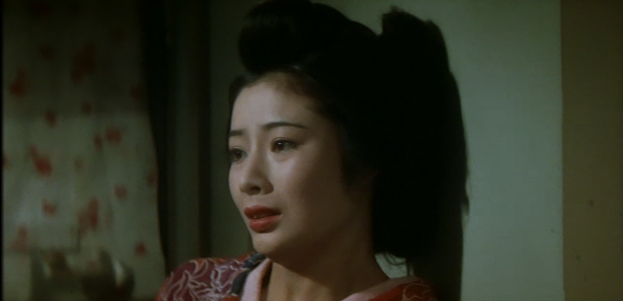
Other titles: A Tale of Two Yakuza (alternate English title); Theater of Life: Hishakaku and Kiratsune (literal English title)1
| Production Company | Toei (Tokyo) |
| Scenarist | Tanada Gorō |
| Source | Ozaki Shirō (novel) |
| Producer | Okawa Hiroshi |
| Planning | Shundo Hiroji2, Okubo Tadayuki, Yoshida Tatsu |
| Cinematographer | Nakazawa Hanjirō |
| Art Director | Fujita Hiroshi |
| Music | Satō Masaru |
| Editor | Nagasawa Yoshiki |
| Performers | Tsuruta Kōji (Hishakaku, a.k.a., Kaku, a wandering yakuza), Takakura Ken (Miyagawa, a yakuza in the Kokin gang), Fuji Sumiko [as Fuji Junko] (Otoyo, Kaku’s woman), Tatsumi Ryūtarō (Kiratsune, an older yakuza)3, Wakayama Tomisaburō (Kogane, oyabun [boss] of the Kokin gang), Ōki Minoru (Terakane, member of the Kokin gang), Hidari Sachiko (Osode, a prostitute and friend of Otoyo), Shin Kinzō (Kuroba, known as “Sensei,” a former teacher of Hyōkichi’s), Amatsu Bin (Taketoko), Matsukata Hiroki (Hyōkichi as an adult), Yano Nobuo (rival gang boss) |
| Status | Extant |
| Photography | Color (with one black-and-white sequence) |
| Format | Widescreen |
| English Subtitles | No |
| Original Release Date | October 25, 1968 |
| Length | 109 Minutes |
| Awards and Festival / Retrospective Screenings | Kinema Junpo “Best Ten” Award (1969): #9; Tokyo FILMeX (2004); BFI Southbank Retrospective (2007); MOMA Retrospective (2016) |
(Note: The only print I own of this film has no English subtitles, though I did view a subtitled version in 2016 during the Museum of Modern Art’s Uchida retrospective. Thus, in addition to what I can gather of the plot from the visuals of the non-subbed version, the following synopsis is taken from my vague memories of the subtitled version, from the few online reviews and plot summaries of the film that exist, and from its close narrative similarities with an earlier Toei film – Theater of Life: Hishakaku (Jinsei gekijō – Hishakaku, 1963), directed by Sawashima Tadashi – which I have been able to view on the Internet with Spanish subtitles. For more information on the Sawashima film, see the Commentary and Analysis section below.)
During the Taisho era in Japan (approximately early 1920s), an aging yakuza, Kiratsune, travels by horse and coach to pay homage at the grave of his former oyabun (gang boss), Hyōtarō. He visits a gigantic, ancient tree on Hyōtarō’s former property. His memory flashes back to a scene from many years earlier, when Hyōtarō was teaching his young son, Hyōkichi, how to shoot a pistol to the very top of the enormous tree. When the boy went back inside the house, Kiratsune had remonstrated with Hyōtarō for teaching such things to the boy, but he was unrepentant. Kiratsune then recalls the day when an older Hyōtarō committed suicide with that very same pistol.
In a jail cell in the present, the now-adult Hyōkichi, a student and aspiring writer arrested for political activities, is sharing the space with, among many others, a yakuza, Miyagawa, from the Kokin gang. A drunken, middle-aged man is thrust by a guard into the cell, and Hyōkichi recognizes him as a former teacher (sensei) of his, named Kuroba. When the men are released, Kiratsune, who is waiting outside, recognizes both Hyōkichi and Sensei, who greet him warmly. They all go to an inn to eat, drink sake and discuss Kiratsune’s plan for a memorial to Hyōtarō.
A yakuza, Hishakaku (known as Kaku), is playing cards by himself in the room he shares with the woman he calls his wife, Otoyo. She had once worked as a prostitute for a yakuza gang, the Ōyokota, but Kaku had seduced her away from them. Both of them have since been granted the protection of the Kokin gang, who have thus aroused the enmity of the Ōyokota. Otoyo begs Kaku not to leave her. However, a member of the Kokin gang arrives and Kaku departs with him.
At a meeting of the Kokin gang, Hishakaku, who feels indebted to them for protecting him and Otoyo, volunteers to direct a battle against the Ōyokota. Kogane, the gang’s oyabun, reluctantly accepts his offer. He gives Kaku a special dagger to use in the battle.
Kaku accompanies the gang, including Miyagawa, to a marshy field in the pouring rain when the Ōyokota gang attacks them. Because of his swordfighting and knife-wielding skills, Kaku saves Kogane’s life and leads the Kokin gang to victory. Kogane expresses his gratitude to Kaku. But when Kaku returns home, he finds that Otoyo has been kidnapped.
Otoyo, trapped in a brothel by the gang’s enemies, talks with a woman who lives there. While looking idly out the window, she spots Narahei, a member of the Ōyokota gang, approaching the building. In fear, she escapes out the window and climbs over the adjacent rooftops. Narahei is just about to chase after her when Kaku catches up to him and knifes him. Kaku escapes and the man dies.
Kaku, fleeing a policeman, hides in the backyard of Kiratsune, whom he has never met. Kiratsune confronts him, but when another policeman comes to his front door, he doesn’t betray the fugitive. Kaku is about to leave, but the older man invites him inside for some sake. They chat amiably and Kaku, just before he leaves, presents Kiratsune with the dagger that Kogane had given him. After Kaku surrenders to the police, Kiratsune returns this dagger to Kogane, and he later visits Kaku in prison to offer him help and encouragement.
Miyagawa, accompanied by a friend who is also a member of the Kokin gang, decides to visit the brothel where Otoyo now works, not knowing she is Kaku’s woman. Osode, another prostitute, brings Miyagawa’s friend into her room. She discovers that the man is a member of the Kokin gang and excitedly runs to Otoyo’s room to tell her the news, showing her the man’s jacket with the word “Kokin” emblazoned on it. Otoyo, stunned, sees the same kanji characters on Miyagawa’s jacket. Realizing that Miyagawa, whom she loves, belongs to Kaku’s gang, she tries, in her shame, to run out of the room, but the friend recognizes her as Kaku’s woman. The man urges Miyagawa to leave the brothel with him, much to Osode’s bewilderment. Miyagawa, learning from his friend about Otoyo’s relationship with Kaku, becomes distraught.
Kaku is released from prison early and Kiratsune, waiting outside the prison, greets him warmly. He brings Kaku to an inn where, as gently as possible, he breaks the news about Otoyo’s relationship with Miyagawa. He also informs him that the Kokin gang has been destroyed. Kaku is shocked. With Kiratsune and Miyagawa, Kaku goes to Hyōtarō’s gravesite, and Kiratsune leaves the two rivals alone. As they talk, Kaku realizes that Miyagawa has cut off the pinky finger of his left hand to atone for his transgression. He appears to be mollified, but Miyagawa seems despondent as he walks away.
Kiratsune and Kaku go to a geisha house. Otoyo, who, unbeknownst to the men, is working as a geisha at the house, enters the room, and she and Kaku are shocked to meet face-to-face. She goes to leave, but Kiratsune urges her to stay. She serves him sake and then approaches Kaku. They affirm their love for one another, with Kiratsune’s approval.
Standing together on the seashore, Kaku and Otoyo, who cannot overcome her shame, are unable to face each other or even speak. She suddenly runs towards the ocean to drown herself, but Kaku stops her and they embrace. Some thugs appear on the beach and violently separate the couple. When the men try to attack Otoyo, Kaku hits them. Kiratsune appears and identifies himself, and the strangers, intimidated, leave. The couple is grateful for the older man’s intervention, but as he cheerfully walks towards the sea, he collapses from an apparent heart attack.
Kaku notifies Hyōkichi and Sensei (that is, Kuroba) of Kiratsune’s mortal illness, and they arrive at the town where Kiratsune is staying. Meanwhile, Miyagawa, in the same town, prepares for a showdown with the Ōyokota gang. The dying Kiratsune – visited by Hyōkichi, Sensei, Kaku and Osode – demands that the sliding doors of his sickroom be opened, so that the giant, ancient tree from Hyōkichi’s childhood becomes visible.
Several thugs from the Ōyokota gang stand watch over the house from a distance. One of them runs off and is captured by Miyagawa, who forces the man to lead him to the gang’s hideout. He rushes inside this house and begins attacking the enemy yakuza. The fight spills out into the front yard. Miyagawa, surrounded by the gang, gets caught in a net of rope and, though he manages to kill a few of his attackers, the rest surround and stab him, killing him.
Back at Hyōkichi’s house, Sensei gives Kiratsune the same pistol that Hyōtarō fired at the tree many years before (the same pistol with which he later killed himself). At this very moment, Kaku receives a message that the Ōyokota have killed Miyagawa. He is torn between staying with his beloved mentor in his final moments and revenging Miyagawa’s death. He, Hyōkichi and the others carry Kiratsune out into the yard and the latter hands the pistol to Hyōkichi, who fires it at the top of the tree. Then, taking the gun from him, Kiratsune himself gleefully fires it once at the tree, then collapses. As soon as Kiratsune dies, Kaku leaves to confront the Ōyokota. Otoyo arrives at the house and Osode informs her where Kaku went.
Otoyo catches up with Kaku and begs him not to go through with his revenge, but he knocks her down rather than let her stop him. Kaku sees Miyagawa’s blood-stained corpse on the ground, covered by a makeshift bamboo “blanket,” and his anger explodes. He attacks the gang members and kills them all, finally taking on the oyabun, whom he also kills. Both Kaku and Otoyo weep over Miyagawa’s body, but when Otoyo tries to embrace him, he walks away. As he disappears into the distance, a blue light appears in the sky, and a bright red mist rises from the earth.
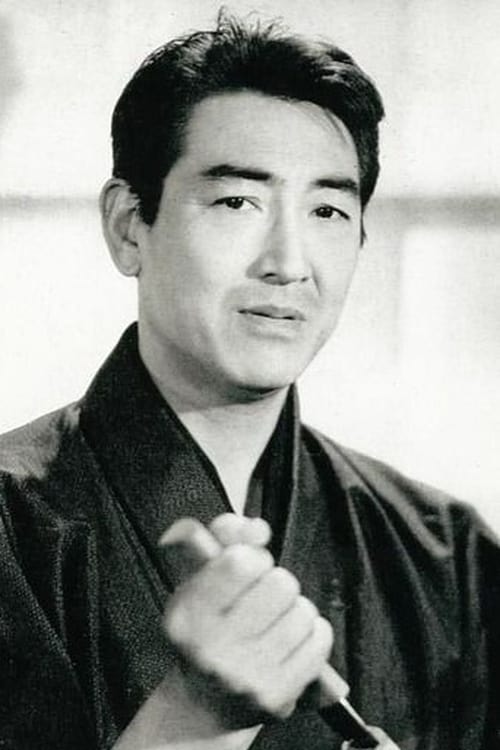
Tsuruta Kōji was the most notable performer of the very popular yakuza genre of the 1960s, rivaling in popularity his frequent co-star, Takakura Ken. After having served in the military during World War II, he joined a theater troupe, and in the late 1940s was signed to a contract by Shochiku Studios. Early in his career, he appeared in films by, among others, Naruse Mikio (The Battle of Roses (Bara kassen, 1950)) and Ozu Yasujirō (The Flavor of Green Tea Over Rice (Ochazuke no aji, 1952)), and became very popular, particularly with female audiences. (He was also a successful recording artist.) These years were tumultuous ones for Tsuruta: his budding romance with the actress Kishi Keiko was abruptly ended by Shochiku after the studio found out about it, and in 1953, he was attacked and seriously injured by a yakuza who had feuded with his manager. In the mid-1950s, he performed in the final two installments of Inagaki Hiroshi’s internationally-acclaimed Samurai trilogy (Miyamoto Musashi I-III, 1954-1956), as Sasaki Kojirō, the nemesis of Musashi (Mifune Toshirō). In 1963, three years after signing with Toei, he appeared in the film that transformed his career: Theater of Life: Hishakaku (Jinsei gekijō – Hishakaku), directed by Sawashima Tadashi, a ninkyō eiga (“chivalrous gangster” movie) in which he played an honorable yakuza. (See Commentary and Analysis section below.) For the rest of the decade, Tsuruta would play variations on this character numerous times, often paired with the young actress Fuji Junko (later known as Fuji Sumiko: see below). In the late 1960s and 1970s, the actor would appear occasionally in the films of director Fukasaku Kinji, which was somewhat ironic, because Fukasaku’s grittier, more “realistic” crime films would eventually make the ninkyō eiga genre obsolete, permanently impairing Tsuruta’s career. He died of lung cancer in 1987, age 62.
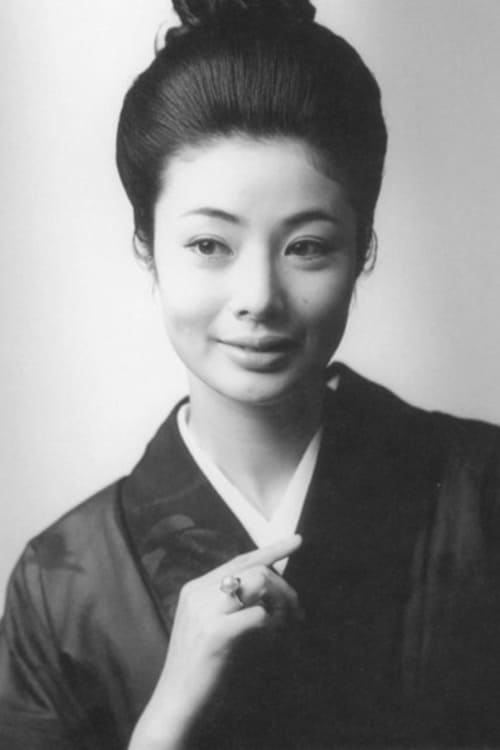
Fuji Sumiko was, in the 1960s and early 1970s, one of the most popular female stars of yakuza films, appearing under the name Fuji Junko. (Her uncle was the director and writer Suzuki Norifumi, who had served as assistant director on Uchida’s The Mad Fox.) She became so popular in such films that a yakuza film series was created as a vehicle for her, in which she played the lead role of the Red Peony Gambler (Hibotan Bakuto). Eight installments of this popular series were filmed between 1968 and 1972, which ended when she left the business temporarily to marry a kabuki actor. Two years later, she returned to acting on television, and in the late 1980s, she came back to film acting under the name Fuji Sumiko. She won several acting awards in the 1990s and 2000s. Her daughter is the award-winning actress Terajima Shinobu.
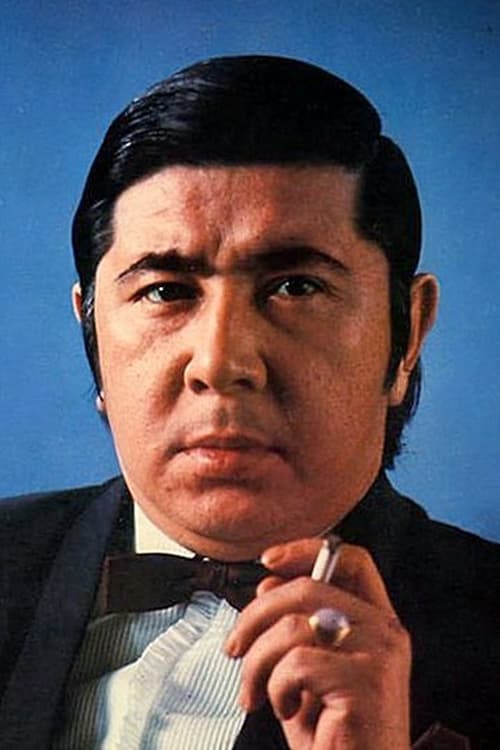
Wakayama Tomisaburō, brother of the major star, Katsu Shintarō (famous for his Zatoichi character), was the son of a notable kabuki actor and, like Katsu, followed his father onto the stage from a young age. As a teenager, he began the study of martial arts, and eventually mastered several disciplines – including a 4th dan black belt in judo – skills that he made extensive use of during his later film career, which began in 1955. His most famous role by far is that of Ittō Ogami in the Lone Wolf and Cub film series (derived from a popular manga), a scowling, disgraced ronin who wanders the countryside with his very young son, Daigorō, usually pushing the child in a baby cart. Six installments of the series appeared between 1972 and 1974, four of which were directed by Misumi Kenji. For his performance in the 1979 gendai mono (contemporary life) film, My Son! My Son! (Shodo satsujin: Musuko yo, directed by Kinoshita Keisuke), he won all the major Japanese Best Actor awards for that year. He also appeared in two Hollywood films: The Bad News Bears Go to Japan (John Berry, 1978) in the role of a baseball coach, and Black Rain (Ridley Scott, 1989), in which, as an oyabun named Sugai Kunio, he delivers a memorable monologue about his experience of the atomic bombing of Hiroshima to the character played by the film’s star, Michael Douglas. He died of heart failure in 1992 at the age of 62.
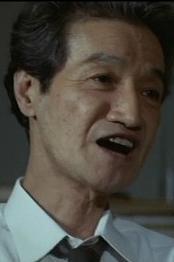
Shin Kinzō began his acting career in a variety of left-wing theater troupes. After a slow start to his movie career in the mid-1930s, he became a very prolific character actor by the early 1950s, appearing in films by Imai Tadashi, Kobayashi Masaki, Shindō Kaneto, Mizoguchi Kenji, Ichikawa Kon, Masumura Yasuzō, Shinoda Masahiro and Kumai Kei, among others. In Ozu’s Tokyo Twilight (Tokyo boshoku, 1957), Shin memorably portrayed the very unpleasant husband of the character played by Hara Setsuko. He died in 1988, age 78.
(Continued on page 2)